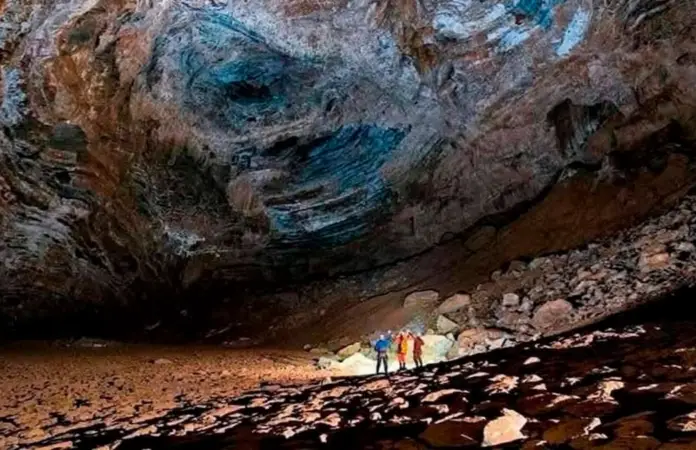In the heart of the Sierra Negra, in the southern part of the state of Puebla, lies a natural phenomenon that defies the imagination: Tlamanictli Cave, recognized as the largest cave in the Americas and the fourth largest in the world.
According to the Ministry of Tourism, this underground wonder houses the imposing “Hall of the Ugly Doll,” a colossal formation with a volume of 63,000 square meters. To give an idea of its magnitude, it is estimated that this space could hold up to six Aztec stadiums.
The cave’s main hall measures 400 meters long, 240 meters wide, and 225 meters high, making it a unique natural spectacle. This geological phenomenon is the result of millions of years of water filtration, a process that has shaped the impressive structures that can be admired here today.
Visits to Tlamanictli require strict measures such as temporary signs and inspections of fixed equipment (x/ @SECTUR_mx)
Reaching Tlamanictli Cave is no easy task. According to the Ministry of Tourism, access requires departing from the city of Tehuacán and heading to the town of Cruztitla, located near the Sierra Negra Mountains.
This tour, coupled with the physical demands of exploring the cave, makes this destination ideal for adventurers in good physical condition.
To ensure visitor safety, it is essential to undertake the expedition in a group and under the guidance of certified experts. The Ministry of Tourism provides interested parties with an online platform (https://rnt.sectur.gob.mx) where they can verify the certification of tour guides.
This resource confirms that the professionals are adequately trained to lead tours in such challenging environments.
Exploring caves like Tlamanictli requires strict safety regulations for both guides and tourists.
According to the Ministry of Tourism, basic equipment includes helmets with chin straps, headlamps, and, in some cases, harnesses and flotation equipment, depending on the cave’s difficulty level.
Caves are classified into three levels based on their complexity, and each level requires specific equipment:
Level 1: Guides and tourists must wear helmets with chin straps and headlamps.
Level 2: In addition to basic equipment, harnesses are recommended for added safety.
Level 3: This level includes specialized caving harnesses, ascent and descent systems, and flotation equipment in case there is water along the route.
In addition, guides must provide an introduction to caving and ensure that tourists understand the basic techniques required for the activity. They must also ensure that the equipment used complies with applicable international and national standards.
Guides must wear individual equipment, including appropriate footwear and clothing, a helmet, a harness, descenders, carabiners, and ascent systems. For tourists, recommended equipment includes a helmet, harness, and carabiners, as well as clothing and footwear appropriate for the conditions of the route.
Collective equipment is also essential to ensure group safety. This includes backpacks, first-aid kits, static ropes of various lengths and thicknesses, spare lights, and emergency tools, such as knives and whistles.
Guides must inform tourists about the specific characteristics of the route, verify that all participants have the necessary physical and technical capacity, and check that the equipment is in optimal condition.
For activities that involve the use of fixed equipment, such as anchor points, guides must check their condition before using them. Furthermore, on routes where there is a risk of getting lost, paths must be marked with temporary signs that will be removed at the end of the route.

Source: infobae




